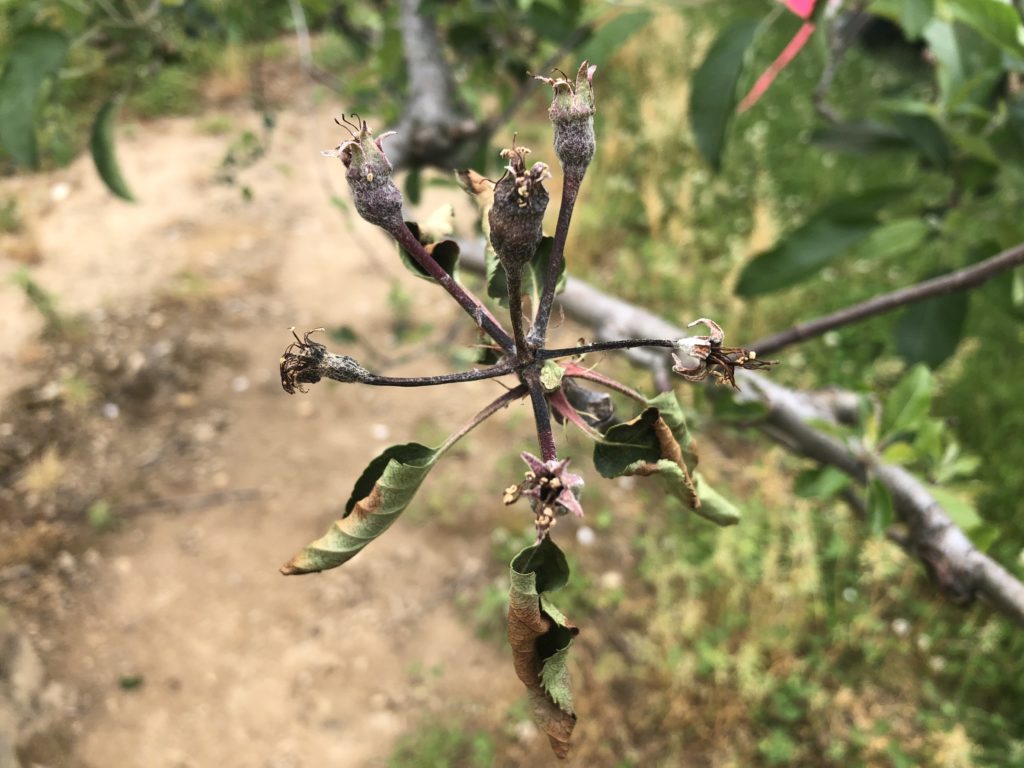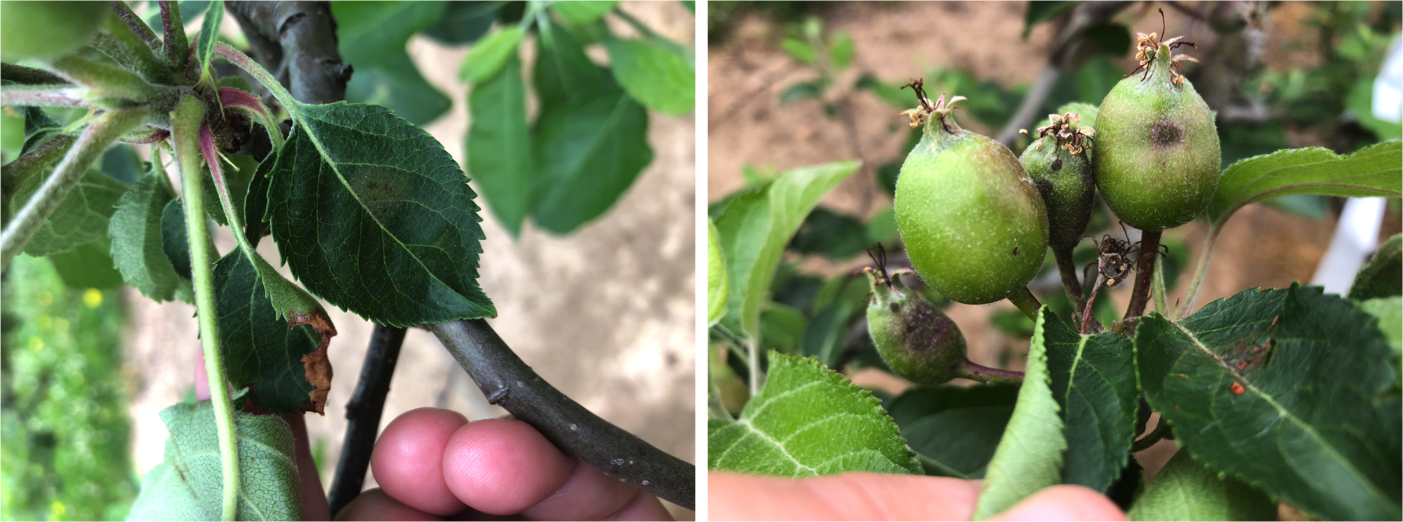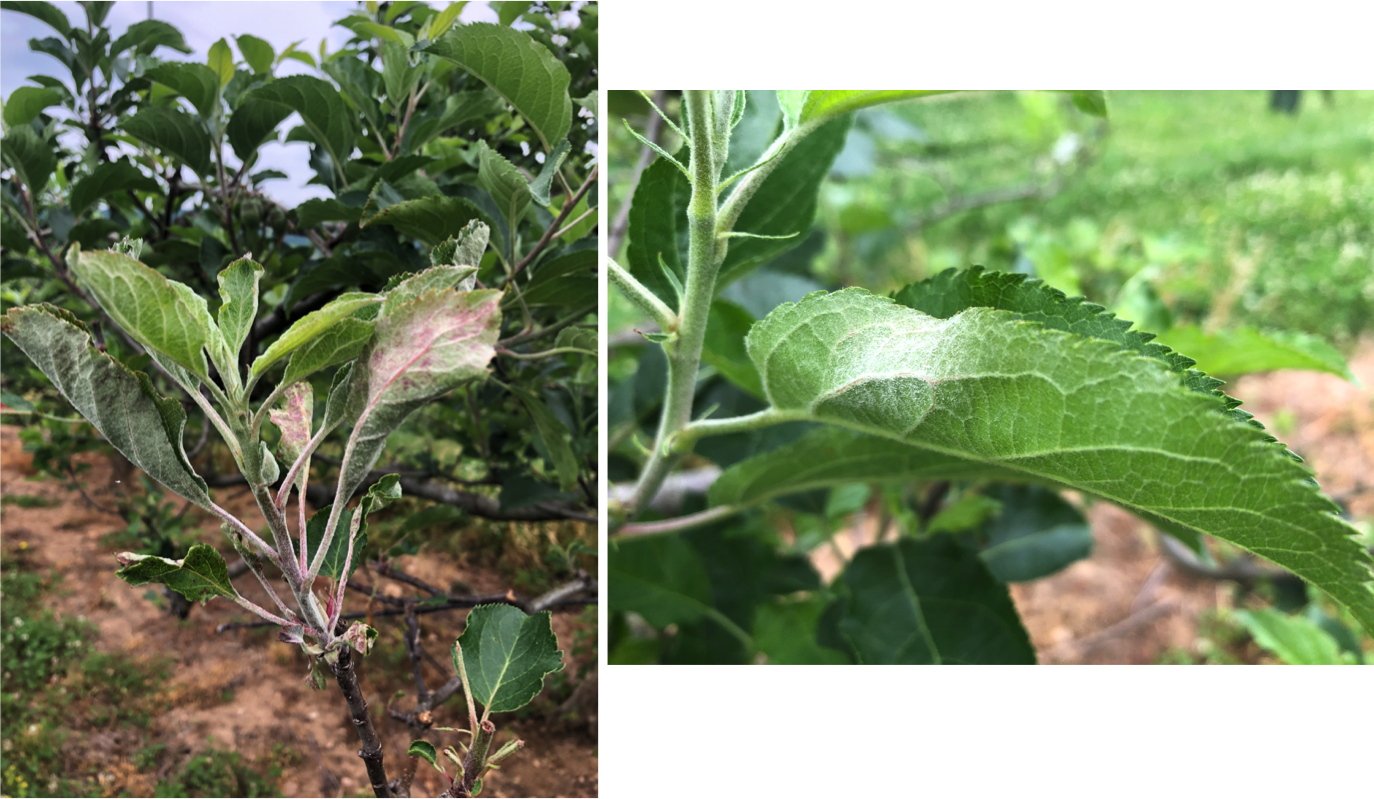Apple Disease Update: 2nd Cover
go.ncsu.edu/readext?527831
en Español / em Português
El inglés es el idioma de control de esta página. En la medida en que haya algún conflicto entre la traducción al inglés y la traducción, el inglés prevalece.
Al hacer clic en el enlace de traducción se activa un servicio de traducción gratuito para convertir la página al español. Al igual que con cualquier traducción por Internet, la conversión no es sensible al contexto y puede que no traduzca el texto en su significado original. NC State Extension no garantiza la exactitud del texto traducido. Por favor, tenga en cuenta que algunas aplicaciones y/o servicios pueden no funcionar como se espera cuando se traducen.
Português
Inglês é o idioma de controle desta página. Na medida que haja algum conflito entre o texto original em Inglês e a tradução, o Inglês prevalece.
Ao clicar no link de tradução, um serviço gratuito de tradução será ativado para converter a página para o Português. Como em qualquer tradução pela internet, a conversão não é sensivel ao contexto e pode não ocorrer a tradução para o significado orginal. O serviço de Extensão da Carolina do Norte (NC State Extension) não garante a exatidão do texto traduzido. Por favor, observe que algumas funções ou serviços podem não funcionar como esperado após a tradução.
English
English is the controlling language of this page. To the extent there is any conflict between the English text and the translation, English controls.
Clicking on the translation link activates a free translation service to convert the page to Spanish. As with any Internet translation, the conversion is not context-sensitive and may not translate the text to its original meaning. NC State Extension does not guarantee the accuracy of the translated text. Please note that some applications and/or services may not function as expected when translated.
Collapse ▲ The forecast is calling for a considerable amount of rain this week in Western North Carolina. Remember, for most diseases in apple, high relative humidity, rain, and extended leaf wetness create an ideal environment for pathogen dispersal, infection. and disease development. Make sure to get a fungicide application on prior to the rain. If you have not reached your annual maximum number of applications with a strobilurin fungicide (FRAC 11; eg Merivon, Flint, Sovran, Luna Sensation), now would be a good time to consider making an application, tank mixed with mancozeb for resistance management. Generally, protectant fungicides such as captan or mancozeb should be reapplied after 2+ inches of rain.
The forecast is calling for a considerable amount of rain this week in Western North Carolina. Remember, for most diseases in apple, high relative humidity, rain, and extended leaf wetness create an ideal environment for pathogen dispersal, infection. and disease development. Make sure to get a fungicide application on prior to the rain. If you have not reached your annual maximum number of applications with a strobilurin fungicide (FRAC 11; eg Merivon, Flint, Sovran, Luna Sensation), now would be a good time to consider making an application, tank mixed with mancozeb for resistance management. Generally, protectant fungicides such as captan or mancozeb should be reapplied after 2+ inches of rain.
Although Glomerella leaf spot and bitter rot are on everyone’s mind at this time of year, make sure the “early season” diseases are not forgotten. I’ve seen quite a bit of primary apple scab infections on cluster leaves and young fruit in our ‘Rome Beauty’ research orchard. These primary scab lesions are actively sporulating and will lead to secondary infections if trees are not protected. Olive-brown colored lesions (often sporulating) on fruit or leaves are the most obvious symptoms of young apple scab infections. As the season progresses, lesions darken, appear scabby or rough, and often crack allowing secondary pathogens to invade. If you are applying Merivon for GLS management, both the FRAC 11 component of the premixed product (pyraclostrobin) and the FRAC 7 component (fluxapyroxad) have high activity against apple scab. 
Symptoms and signs of primary and secondary powdery mildew have also been observed in our ‘Rome Beauty’ research orchard at MCHREC. The powdery mildew pathogen overwinters in dormant buds that were infected during the previous growing season. Infected shoots with primary mildew (shoots in which dormant bud was infected) will be stunted, malformed, and have a white/silver color (left photo below). Secondary powdery mildew infections on foliage will appear as white, fuzzy tufts on either side of the leaf (right photo below). Older lesions look burnt out and can take on a red/purple color. Leaves with severe infection curl inward. As leaves age they become increasingly resistant to infection. Single-site fungicides, including the several DMIs (FRAC 3: Procure, Rally 40WSP, and TopGuard) and strobilurin-containing products (FRAC 11) have demonstrated high levels of efficacy in NCSU research trials. In general, DMI fungicides that tend to perform better against apple scab in DMI insensitive populations (i.e.Inspire Super and Indar 2F) and SDHI fungicides (e.g. Aprovia, sercadis; FRAC 7) have demonstrated only moderate control (see petal fall post). Captan and mancozeb have little to no control against apple powdery mildew.
This week I’ve also received several inquiries on cedar apple rust and fire blight. Strictly utilizing a cultural control program for CAR is challenging as two hosts are needed to complete the pathogen’s life cycle. Spores from alternate hosts (e.g. juniper and Eastern Red Cedar) can travel 2 to 5 miles making alternate host or gall removal a futile effort. DMI fungicides (FRAC 3) are the standard for cedar apple rust management. If early symptoms are observed consider making a DMI application and following up 10 to 14 days later. Fortunately, CAR does not have a secondary cycle on apple so if no infections are present, continue to scout for a few additional covers. Red Delicious and Gala are considered fairly resistant, however, lesions on leaves of these cultivars were reported today in central NC. On several moderately resistant cultivars I have observed several situations where leaves will become infected but symptoms will not be severe and do not show up on fruit, and thus targeted DMI applications may not be warranted.
With the high amount of precipitation in our upcoming forecast, make sure to not forget about shoot blight. Applications of the PGR, prohexadione calcium (Apogee or Kudos), slow or inhibit growth of terminal shoots which are most susceptible to shoot blight. Make sure to remove any blossom/spur or shoot blight infections at least 12 inches from the infection margin, on a dry day. See last week’s 1st Cover post for additional tips on shoot blight management.
Lastly, and arguably most importantly in NC here don’t forget about Glomerella/Bitter Rot Management. I have GLS management in depth in the petal fall post, 1st cover post, and a special Glomerella leaf spot/fruit rot post.
For information on fungicide efficacy and additional fungicide options, refer to the 2018 Integrated Orchard Management Guide for Commercial Apples in the Southeast.



